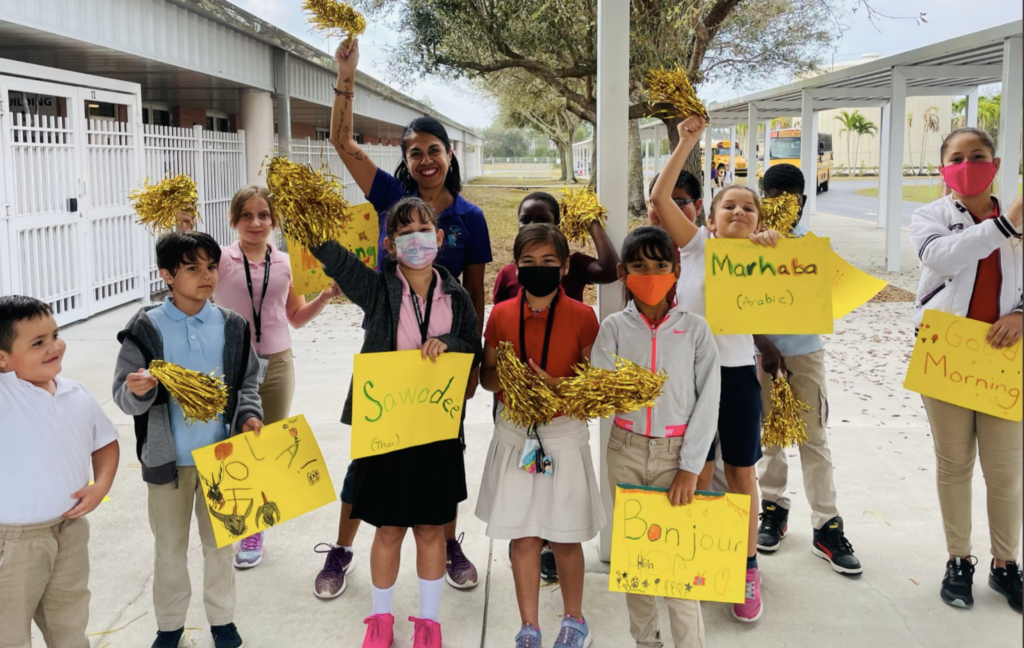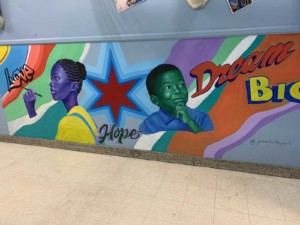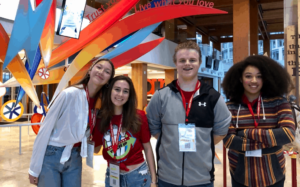What is Belonging, and Why Does it Matter in Schools?
Key Points
-
Education as a whole needs to adapt to our increasingly diversified world.
-
Educators assume a pivotal role in assuring students feel welcomed, confident, and inspired within their social responsibilities in and out of the classroom.

By Adam Strom, Meisha Lamb-Bell, and Fernande Raine
In an era defined by profound demographic shifts and burgeoning diversity within our classrooms, the imperative to cultivate a sense of belonging within educational ecosystems has never been more pronounced. Amidst this backdrop, our report, “Building Belonging: Harnessing the Power of Education in an Era of Demographic Change,” offers a deep dive into both the challenges and opportunities presented by the dynamic demographic landscape of the United States, underscoring the critical need for educational practices that champion belonging as a cornerstone of an inclusive society.
The significance of belonging stretches far beyond a mere sense of inclusion; it is the linchpin for students’ well-being, academic success, and social cohesion. Studies reveal that a robust sense of belonging can mitigate loneliness and depression, bolster self-esteem and resilience—qualities especially crucial for students grappling with identity challenges.
Academically, those who perceive themselves as integral parts of their educational communities exhibit heightened engagement, motivation, and achievement. Socially, the cultivation of belonging fosters cohesion diminishes prejudice, and champions inclusivity among diverse groups, thereby transforming schools into environments where every student feels valued, understood, and part of a larger community narrative.
The urgency of fostering belonging is further magnified by the societal divisions and cultural anxieties that often accompany demographic transitions. These include polarization, mistrust, and xenophobia, which, if unchecked, threaten to deepen societal fissures. Schools, therefore, emerge as pivotal agents in building belonging within communities, serving as bastions of civic engagement, respect for diversity, and cooperation towards shared goals.
Educators, in this regard, assume a pivotal role. Beyond their duties as instructors, they act as mentors and role models, guiding students through their educational journeys and instilling in them a sense of social responsibility that transcends the confines of the classroom. Schools, by providing equitable access to education irrespective of a student’s background or economic status, stand as beacons of inclusivity and fairness.
To surmount institutional hurdles and effectively foster belonging, schools can adopt a variety of strategies. These include implementing whole-school practices that reflect diversity, engaging in bridging activities across different identities, employing culturally responsive teaching, and fully integrating immigrant students and English Language Learners into the fabric of school life.
The transformative potential of schools as community hubs for building belonging is vividly illustrated through initiatives like Sarah Said’s “Pieces of Me” project. Inspired by the children’s book “The Name Jar” by Yangsook Choi, this project encouraged students to explore and celebrate their unique identities and heritage, fostering a profound sense of pride and belonging within the school community. By leveraging students’ names as a starting point, the project catalyzed meaningful discussions on identity, heritage, and culture, thereby making the school’s diversity visible and strengthening feelings of belonging across differences.
Similarly, Donna Neary’s “Emma Lazarus Project” showcases the power of exploring historical migration stories and fostering empathy through literature. By engaging with the poem “The New Colossus” and integrating primary sources, students connected their family narratives with broader themes of freedom and resilience, thereby recognizing their place within the American story.
Sandy Mendoza’s “International Cafe” initiative further exemplifies the impact of creating spaces that celebrate linguistic and cultural diversity. By encouraging English learners to greet peers in the multiple languages spoken by members of the community, this initiative not only celebrated cultural pride but also fostered a spirit of belonging across differences. How did she do that? Her efforts focused on making the diversity that already existed within the school community visible. More than that, the project helped newcomers, who might have otherwise felt excluded or disempowered, to flip the script; no longer simply accepted, newcomers became leaders, changing both how they saw themselves and how they were perceived by their peers.
These examples underscore the creative ways educators can harness the potential of schools to build belonging, especially when supported by their institutions. Yet, we’ve also heard from educators eager to launch similar projects but apprehensive about administrative support. This represents a missed opportunity. The research is unequivocal: fostering belonging within educational ecosystems is essential for individual well-being, academic success, and societal cohesion.
Instead of mirroring societal divisions in ways that detrimentally impact all students, schools have the opportunity to cultivate inclusive environments where diversity is celebrated, inclusivity is promoted, and every student feels valued and connected. By embracing diverse perspectives, promoting empathy, and fostering a sense of belonging, schools play a vital role in shaping inclusive communities and preparing students for a more cohesive and understanding society.
The endeavors of educators like Sarah Said, Donna Neary, and Sandy Mendoza exemplify the innovative approaches teachers can adopt to tap into schools’ potential as community hubs for building belonging, provided they receive institutional support. By prioritizing belonging, schools can create spaces where every student thrives and develops the lifelong skills necessary to navigate demographic change effectively.
Adam Strom is the Executive Director of Re-imagining Migration
Meisha Lamb-Bell is the Program Director of Re-imagining Migration
Fernande Raine is the Founder of the History Co:Lab




0 Comments
Leave a Comment
Your email address will not be published. All fields are required.